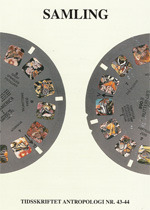KVARKER, LEPTONER OG DEN OVERFLØDIGE SAMLING: Jagten på en teori for alting – og ingenting
DOI:
https://doi.org/10.7146/ta.v0i43-44.107428Abstract
The article views collections as non-random
accumulations, i.e. objects with interrelations
and a well hidden, unifying theme.
In the greatest of all collections, referred to
loosely as the universe, such interrelations
make up the “laws of nature” of which we
have already unravelled so many. The theme
under which it was all put together, however,
has still to be revealed. After briefly outlining
the evolution in physics from Democritos’
atomic theory to the 19th century advent of
the periodic table of the elements, the article
continues with a descent into the finer details
of matter, ending up at the quarks and leptons
which constitute the matter particles of the
so-called standard model of elementary
particles. The collection of all matter hitherto
observed in the universe has repeatedly been
subjected to a reduction based on the rationale
that seemingly different objects are identified
merely as different manifestations of the
same object. A simpler, yet representative
collection is established once the emerging
structures of the collection at hand have
been properly resolved. It is the nature of
this sobering reductionist process which is
the topic in which the discussion draws upon
a selection of examples from the ancient, as
well as the more contemporary, history of
physics.
Downloads
Published
How to Cite
Issue
Section
License
Ophavsretten til artiklerne i Tidsskriftet Antropologi tilfalder forfatteren.
Artikler publiceret i Tidsskriftet Antropologi må citeres, downloades og videresendes for ikke-kommerciel brug, under forudsætning af normal akademisk reference til forfatter(e) samt tidsskrift, årgang, nummer og sider. Artiklerne må kun genudgives med eksplicit tilladelse fra forfatter(e) og tidsskriftet.


